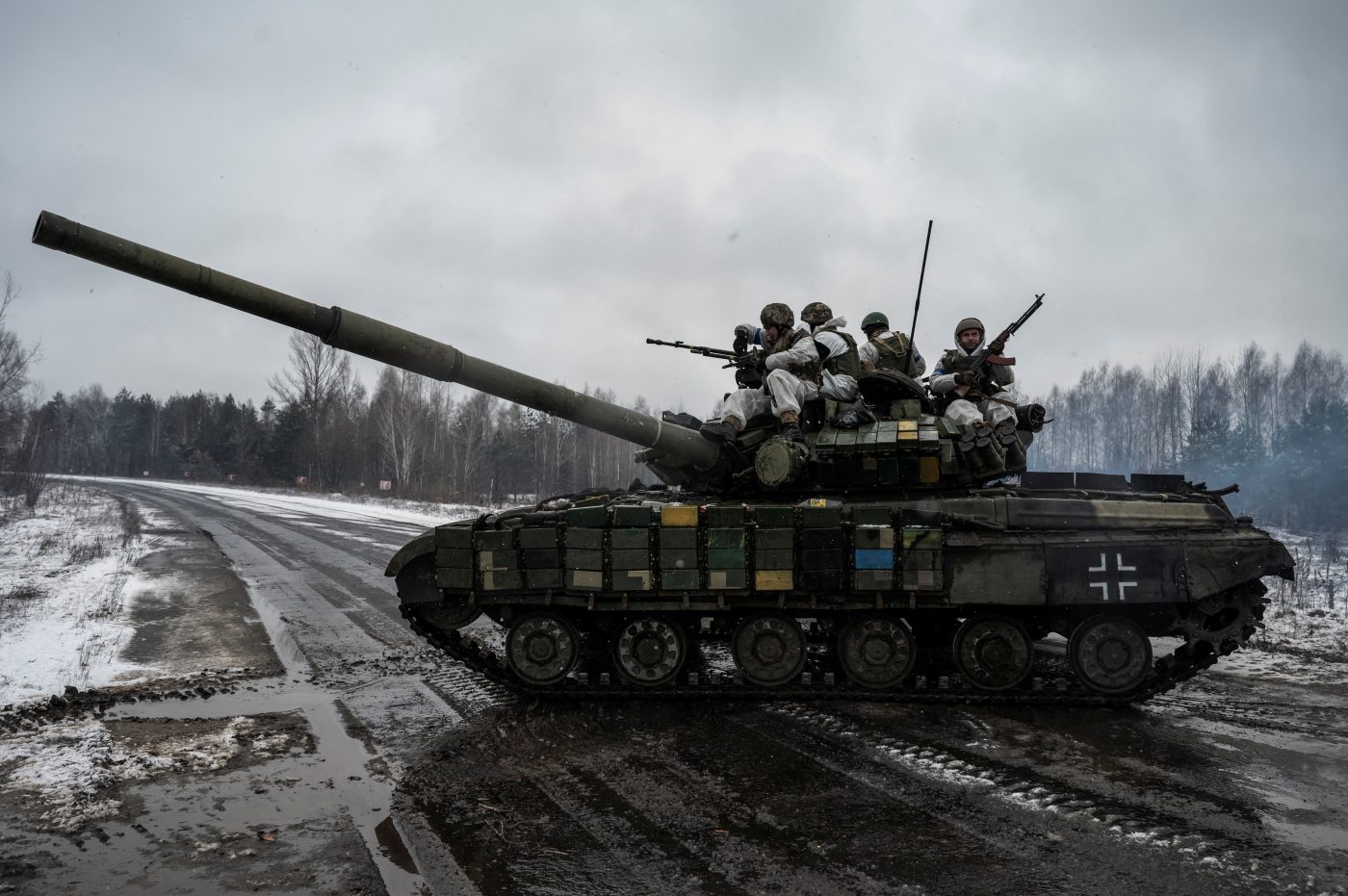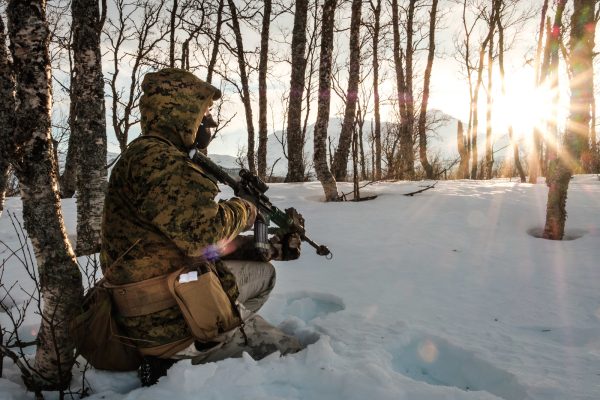“The precision revolution,” a former dean of the US Army War College recently opined, “changes everything.” Over the past year, Russia’s full-scale invasion of Ukraine has made it clearer than ever that this latest military-technical revolution has three elements:
- constant surveillance
- inexpensive autonomy, and
- wicked precision.
Space power ties together these reconnaissance-strike complexes for defense-in-depth across land, sea, and air. All of which require a rethinking of how to fight in modern war.
Land. In early 2022, Ukrainian action in the Battle of Kyiv reminded us of what anti-tank missiles can do to armored vehicles. Russia’s failure to employ combined-arms tactics greatly exposed those vehicles, much as Israeli failure did early in the 1973 Yom Kippur War. However, the fire-and-forget functionality of the newest anti-tank weapons has swung the advantage towards the hunters, with pop-up attacks and tandem warheads to penetrate defenses.
Less expected was the use of loitering low-cost drones in adjusting the fires of precisely positioned artillery. The combination of all this sent bloodied Russian columns stumbling back to the border and may have saved the capital. Over the ensuing year, Russia lost half its modern tanks, and many more than 100,000 troops (British intelligence says the number may be 200,000, including around 50,000 dead.) What came later were tanks from the 1960s and troops straight from the prisons. Mass matters, which is why Ukraine is still pressed on multiple fronts. However, mass is a poor choice for outflanking precision, in the same way, that bodies could not beat bullets in the no man’s lands of the First World War.
Sea. Littoral waters are also fast becoming a no man’s land. The Ukrainians, with NATO’s help, can continuously surveil the entire Black Sea, and their anti-ship missiles can reach as far as 100 miles from their shores. A Russian amphibious move against Odesa is now clearly far more feared than feasible. The sinking of Russia’s Black Sea flagship, the cruiser Moskva, may have been fortuitous, but with missiles hiding ashore and drones lurking at wave level, Ukraine’s navy-without-ships can attack repeatedly when opportunities arise.
Eventually, any enemy warship will run out of defensive missiles, or just luck. Someday, Ukraine’s drone boats may be not converted jet skis, but real robotic submarines, taking retargeting updates through slender radio masts, and fully submerging for terminal runs. To survive against such threats, submarines will need to sound like fish, and surface vessels will need to appear as waves.
Air. The bigger problem may be for aircraft. To avoid an attack while aloft, they must appear as empty as the ether. As Russia’s once-vaunted air force has no stealthy aircraft, all of Ukraine’s airspace has been close to a no-go zone — except for missiles and drones launched from a comfortable distance. Ukraine’s fighter jets have dispersed to survive, and its helicopters too remain operational. However, the real impact has been from Ukraine’s HIMARS missiles, which can destroy any depot or headquarters within 70km (43 miles) of the front. Long-range strikes by Ukraine’s domestic drones have also demonstrated that manned aircraft are vulnerable on the ground, where they spend most of their time, even in wartime.
Moreover, in December, Ukrainian attacks on Tupolev bombers at Russia’s Engels and Dyagilevo airbases illustrated how even faraway nuclear forces have become vulnerable to precision conventional attack.
Space. All this has been tied together with satellite constellations for navigation, observation, and communication. Against these unblinking eyes, counter-scouting is limited in time and space. The actual satellites have remained well beyond Russia’s reach, or at least its will to act. Russia’s electronic attacks on terrestrial terminals have been vexing, but not so powerful to protect against precision kinetic attacks. For this reason, the decision by Elon Musk’s SpaceX to limit Ukrainian access to its Starlink communications service has been disappointing. In the long run, however, Starlink is but one service, and SpaceX is but one company. Constellations are quickly proliferating, and corporate managers can be overruled.
Similarly, not all new weapons have fared equally well. Progress with autonomy has been uneven: big and obvious drones meant for counterinsurgency have not lasted long, but small, expendable devices have proven well worth their consumption rates. Such rebalancing should be expected in this present intensification of an enduring hider-finder competition. In the early 20th Century, motorized maneuver penetrated no man’s lands, but required concentrations of manpower and materiel. In the early 21st century, such concentrations are vulnerable to surveillance, autonomy, and precision — on land, at sea, and in the air.
This has implications for how and where armies place their logistics, navies their surface ships, and air arms their aircraft. Adapting to the new exigencies of war means exploiting the defensive potential of a reconnaissance-strike complex.
Most remarkable is how quickly the Ukrainians mastered the technologies and tactics, from a near-zero capacity in 2014. Today, Ukrainian battalions have organic software developers, and Ukrainian volunteers do violence with homemade drones. From a standing start, the bottom-up initiative has built and iteratively tested the tools of democratized destruction. Do NATO’s military forces similarly possess what it takes to adapt under fire?
James Hasik is a Non-resident Senior Fellow with the Transatlantic Defense and Security program at the Center for European Policy Analysis (CEPA).
Europe’s Edge is CEPA’s online journal covering critical topics on the foreign policy docket across Europe and North America. All opinions are those of the author and do not necessarily represent the position or views of the institutions they represent or the Center for European Policy Analysis.





